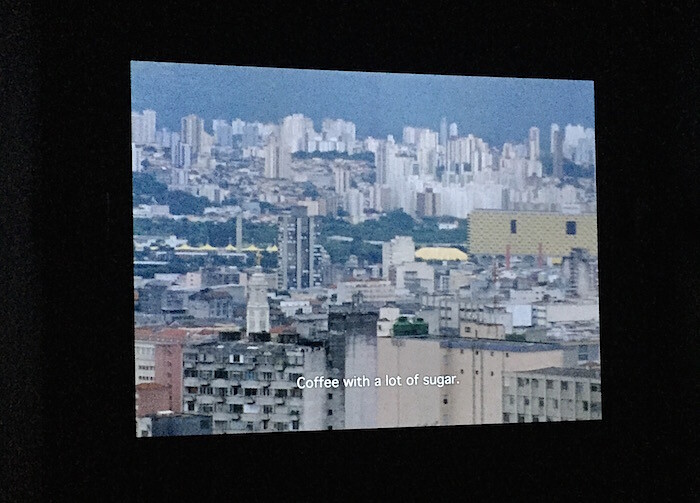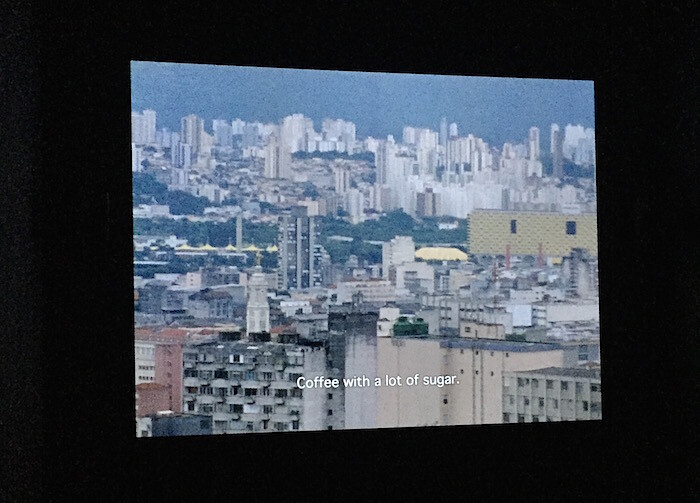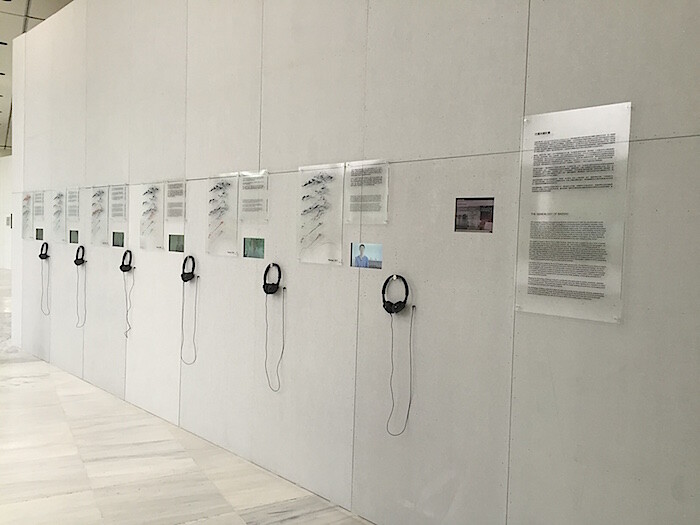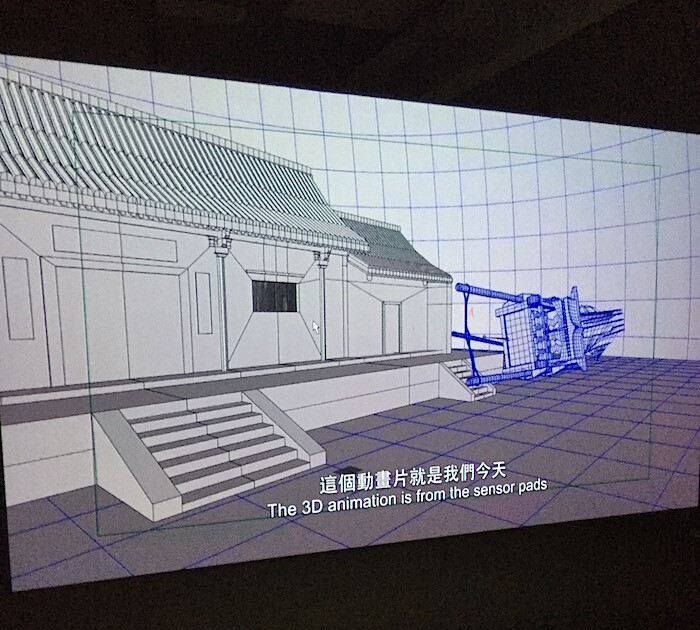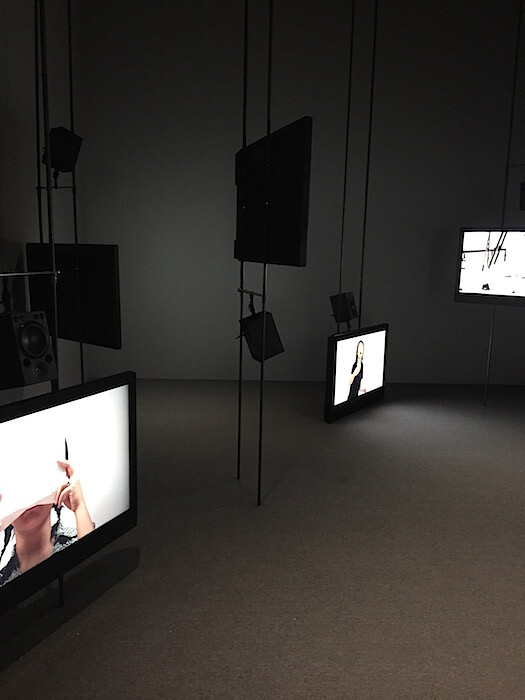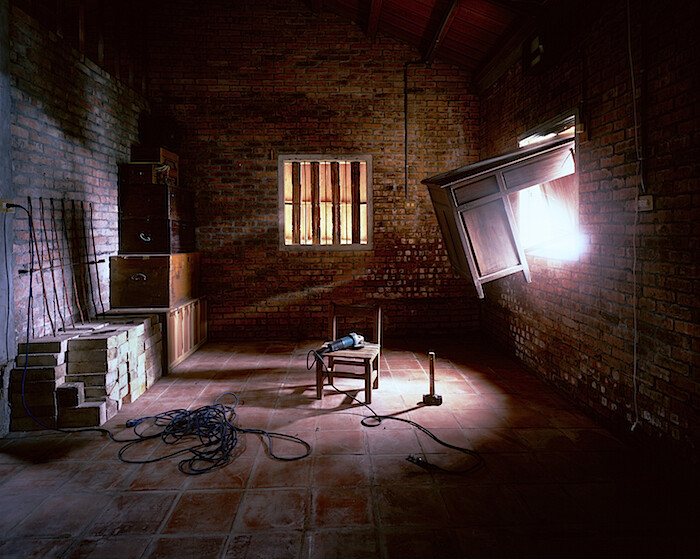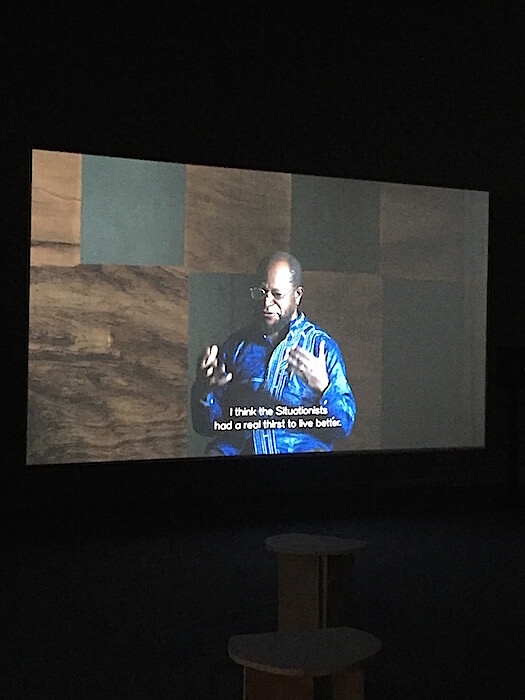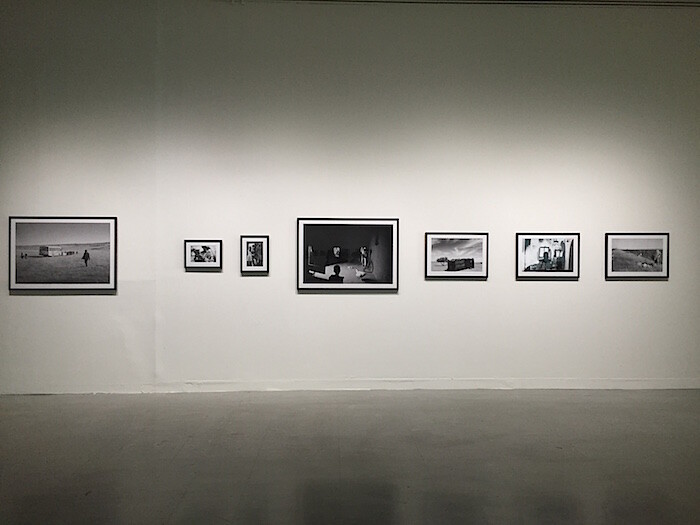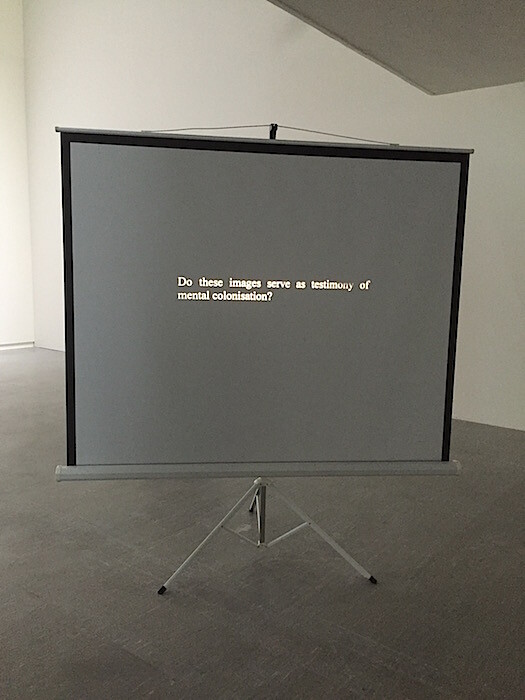The title of the tenth Taipei Biennial, “Gestures and Archives of the Present, Genealogies of the Future,” includes everything but the term hammered throughout the exhibition: history. Curated by Corinne Diserens, this biennial departs from the 2014 edition helmed by Nicolas Bourriaud on the theme of accelerationism. Where Bourriaud’s apocalyptic-yet-seductive exhibition meditated on humanity’s impact on the environment, with a large contingent of rising-star artists utilizing high-tech processes, this year’s largely monochromatic show returns to such concerns as documentary, spirituality, and the legacy of colonialism. Though not explicitly stated, this biennial engages dialogues about identity currently taking place in the institutional art world.1
Diserens, in her curator’s statement, describes her methodologies as “performing the architecture, performing the archive, performing the retrospective.”2 The second point is most salient: artists’ creative use of archives is the exhibition’s through line. But the architecture of the museum itself isn’t performed so much as left bare: a stage for other gestures to accumulate. The third phrase nods to Retrospective (2012–ongoing), a work by choreographer Xavier Le Roy re-presenting his past dances, that will only take place in the galleries this December and January. The exhibition, occupying two of the Taipei Fine Arts Museum’s three floors, represents around 50 of the biennial’s more than 80 participants. The remainder of the artists contribute to a live, cinematic, and discursive programme that will stretch throughout its five-month run, including longer film screenings in a “little cinema;” a slate of performances; a tripartite symposia and various conferences; and an editorial platform on artist-led publications organized by Ingrid Chu and Kit Hammonds.
Despite the performative mandate, works addressing architecture skew uneven. The show opens with a grey-box cinema, easy to overlook, which screens a selection of films by Manon de Boer. The Brussels-based artist broaches the themes of psychogeography with great emotion and nuance in Resonating Surfaces (2005), her experimental biography of the Brazilian psychoanalyst Suely Rolnik. Two works by the Phnom Penh–based artist Pen Sereypagna are installed on a wall placed diagonally between de Boer’s films and the entry to the first floor galleries. Genealogy of Bassac, (2014–ongoing), a case study of gentrification in a Phnom Penh neighborhood, features architectural models, videos, and renderings. The opposite side provides the backdrop for painstaking research by The Vann Molyvann Project (2009–ongoing), a collective (comprising Pen and others) that investigates the oeuvre of the postcolonial architect Vann Molyvann. With dense clusters of information, the two works make the urgent issues of gentrification and historical erasure seem like a dry lesson.
A nearby gallery showcases Chen Chieh-jen’s standout “Realm of Reverberations” series (2014). This complex project investigates the charged history of the Taipei’s Losheng Sanitorium, built to house victims of Hansen’s disease (aka leprosy). It became the focus of a politicized struggle when the city seized it as the site of a future Rapid Transit System building. Introducing the project are graphics, timelines, and maps. Their didactics threaten to distract viewers from the exquisite four-channel black-and-white video (Realm of Reverberations, 2014). The videos distill the institution’s history into a series of quiet cinematic gestures, like smoothing the blanket of a deceased person.
This cinematic sense also informs works with spiritual themes. Park Chan-Kyong’s seamless three-channel video Citizen’s Forest (2016), on the second floor, depicts a musical ritual of disguised figures dancing through the woods. Loosely based on an unfinished Korean history painting by Oh Yoon (1946–1986), the ghostly work is absorbing on its own terms. Spirit Writing (2016), a two-channel video installation by Chia-Wei Hsu, deconstructs the cinematic apparatus as the artist documents his encounter with the frog god Marshal Tie Jia—a deity housed within a traditional divination chair. The god speaks through four villagers, Ouija board-style, who hold the chair and “write” with its legs, later interpreting the script. On camera the whole time, Hsu initiates conversation with the 1,400-year-old frog god. Hsu’s and the deity’s dialogue begins with a discussion of camera angles, and concludes with Marshal’s request to take a picture with the villagers. Hsu asks Marshal to describe his temple destroyed during the Cultural Revolution, which is rendered in 3D animation on the opposite side of the screen.
In terms of local representation, the biennial deserves kudos: out of 50 artists in the exhibition, 20 are Taiwanese. Three of them reflect the curator’s preferred methods of research and performative collaboration, with political implications. Hong-Kai Wang’s multichannel video The Band of the Awful Ones (2016), produced during workshops at Taipei’s Guling Street Avant-Garde Theatre, features performers improvising reactions from anger to fear in response to a restrictive bandit law imposed during the Japanese colonial period (1898–1915). Prophet (2016), a video by Su Yu Hsien, restages a Taiwanese avant-garde play from the 1960s with its original directions and actors. A couple (performing increasingly rapid and agitated banter, like the characters in Edward Albee’s 1962 play Who’s Afraid of Virginia Woolf?) remain seated in the audience, while the curtains open and close on the stage. Taiwanese artist Yeh Wei-Li presents work related to his ongoing investigation of artist Yeh Shih-Chiang (1926–2012), whose house museum he has carefully constructed—and which becomes a set for his photographic tableaux.
Identity politics as a curatorial grouping strategy proves more slippery. One gallery on the second floor confines several Korean artists’ work—in divergent styles—to the same corridor. Works with African subjects are also grouped together. Vincent Meessen’s video installation One.Two.Three (2015) is a captivating look at Congolese musician M’Belolo Ya M’Piku’s Situationist International anthem. Forgotten by radical political history, M’Belolo tells his story and directs a new interpretation of his song. Nearby, South African artist Santu Mofokeng presents two series of black-and-white photographs from the 1980s and ’90s depicting rural life, as well as The Black Photo Album/Look at Me 1890–1950 (1997), a slide presentation of found photographs of black working- and middle-class people. Mofokeng intersperses what might otherwise be viewed as “anonymous” images of stiffly posed subjects in The Black Photo Album, which he collected from ten South African families, with identifications of the subjects (when known), information about the way the photographs were found, and observations like “Are these images evidence of mental colonization or did they serve to challenge prevailing images of ‘The African’ in the Western world?” Ângela Ferreira, born in Mozambique and living in Lisbon, shows the installation A Tendency to Forget (2015), which criticizes the supposedly “apolitical” Portuguese anthropologists Margot Schmidt and António Jorge Dias through a look into their personal archives. The work comprises a suite of photographs of Lisbon’s ethnological museum and former Portuguese Overseas Ministry and a built structure mimicking the façade of the Ministry, which houses a film parsing the duo’s racial biases and sympathies with the Salazar regime.
It’s important to note that the artists mentioned above who deal with postcolonial topics concerning Africa, with the exception of Mofokeng, are white themselves. Furthermore, during the biennial’s opening symposium, three white filmmakers (Ferreira, Penny Siopsis, and Ella Raidel) presented works on African themes. All of the artists had critical approaches, and Ferreira and Siopsis are native Africans, who spoke with gravity about their personal connection to their subject matter, too. The critique is not of the artworks, which are worthy and nuanced, nor of the biennial’s racial representation, but rather of the biennial’s approach to archives and how they speak to power. As Diserens herself noted in her opening statement, what gets archived reflects power and domination. International biennials, too, become archives. The curator’s task today, it seems, is not only to present art that challenges power, but to challenge how privilege—racial and otherwise—gets reconstituted in the institutional art world.
Consider Okwui Enwezor’s 2015 Venice Biennale exhibition, “All the World’s Futures,” which or more recently, the September 2016 issue of Artforum on the topic “Art and Identity.”
Corinne Diserens, “A Few Words in the Form of an Introduction,” Gestures and Archives of the Present, Genealogies of the Future: A New Lexicon for the Biennial (Taipei: Taipei Fine Arts Museum), 8.
